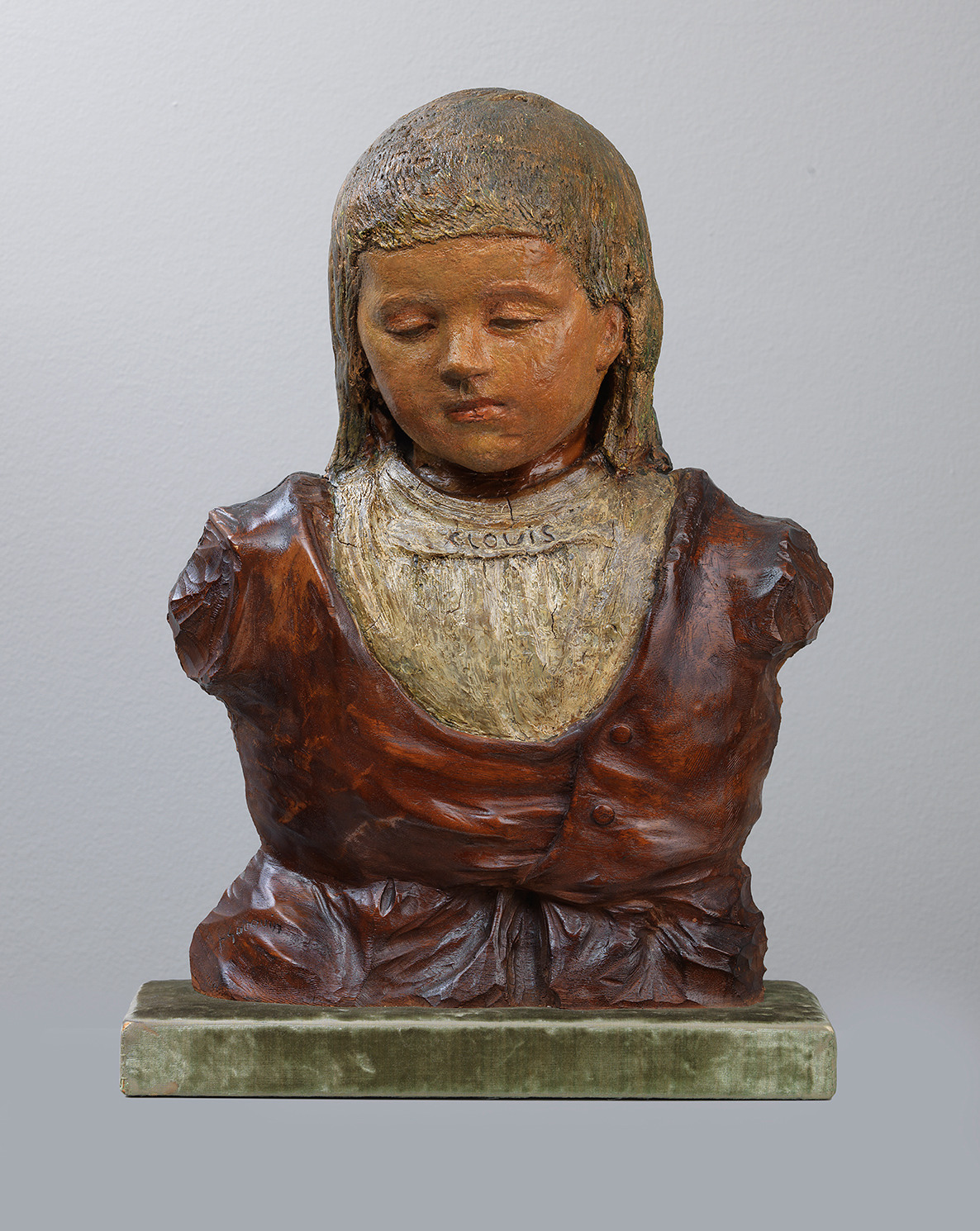GROUNDBREAKING SCULPTURE BY PAUL GAUGUIN ACQUIRED BY ORDRUPGAARD
Ordrupgaard has just acquired an important early sculpture by Paul Gauguin (1848–1903) with the support of the New Carlsberg Foundation and the Augustinus Foundation. In 1882, the sculpture Clovis (bust), dating from 1881–82 and previously in private ownership, was featured in the Seventh Impressionist Exhibition in Paris; since then, it has been exhibited only once before, at the Free Exhibition in Copenhagen in 1893. Now—for the first time in over a century—it will be publicly accessible at Ordrupgaard, where it will be on permanent display alongside the museum’s other works by Gauguin. The sculpture depicts the artist’s son, Clovis.
Gertrud Oelsner, director of Ordrupgaard Museum, states: “We are very pleased and grateful that thanks to the generous support of the New Carlsberg Foundation and the Augustinus Foundation, we have been able to acquire Paul Gauguin’s portrait of Clovis. Opportunities like this are extremely rare. This acquisition is the fruit of Ordrupgaard’s longstanding research and dissemination work on Gauguin, which has garnered significant international attention. We already have one of the world’s most significant Gauguin collections at Ordrupgaard, and this new acquisition strengthens our unique collection at its core.”
CLOVIS (BUST)
Clovis (bust) dates back to the early 1880s, at a time when Gauguin was still exhibiting his art alongside the Impressionists. The work can be seen as a response to Edgar Degas’ sculpture Little Dancer Aged Fourteen (1878–1881), which had caused a sensation one year earlier by incorporating “found objects,” such as real clothes and hair, in an effort to convey a naturalistic expression. Similarly, Gauguin also integrated an objet trouvé [found object], a fragment of an older wooden sculpture—perhaps from the Middle Ages—into the portrait of his then two-to-three-year-old son, Clovis. Unlike Degas, Gauguin’s interest was not in portraying his subject naturalistically. Rather, with consciously stylized tendencies, the sculpture anticipated Gauguin’s mature expression and so-called “Synthetism,” which would become characteristic of works he created in Brittany and French Polynesia, focusing on inner spiritual perceptions of the world rather than realistic depiction.
The bust of Clovis stands 40 cm tall. It consists of a painted wax child’s head mounted on an older wooden torso. There is a stark contrast between the finely-modelled features of the wax head and the torso, whose chest seems too robust for such a young child. Together with the child’s stylized hair and half-closed eyes, the sculpture takes on an archaic expression, further emphasized by the primitively inscribed name “Clovis” along the neckline of the shirt. The boy was named after his grandfather, and Gauguin deliberately plays with the name’s coincidence with that of the Frankish King Clovis (Clovis I, ca. 466-511), who converted to Catholicism and introduced Christianity to France.
PAUL GAUGUIN AND ORDRUPGAARD
Clovis (bust) will now be a permanent part of the collection alongside the museum’s total of 11 works by Gauguin. The artist’s growing brood of children is already represented in the collection with the painting The Little One is Dreaming, Étude and the sculpture Child’s Head, representing his daughter Alina and son Jean-René, respectively—both created in Paris in 1881. These works provide a rare glimpse into Gauguin’s early formative years in Paris, where he still worked as a stockbroker and lived with his wife, Mette (née Gad), and their children.
The founders of Ordrupgaard, Henny and Wilhelm Hansen, took great interest in Gauguin and acquired a total of eight of his works. This collection was subsequently supplemented with three sculptural pieces: Child’s Head (1881), Clovis (bust) (1881–82), and the ceramic jar Breton Woman Herding Geese, 1886–87.
Ordrupgaard has previously hosted three major exhibitions featuring Gauguin: Gauguin and Impressionism in 2005, Van Gogh, Gauguin, Bernard: The Drama of Arles in 2014, and Gauguin and His Friends in 2022.
Clovis (bust) will be displayed in the large gallery of the French Collection.
